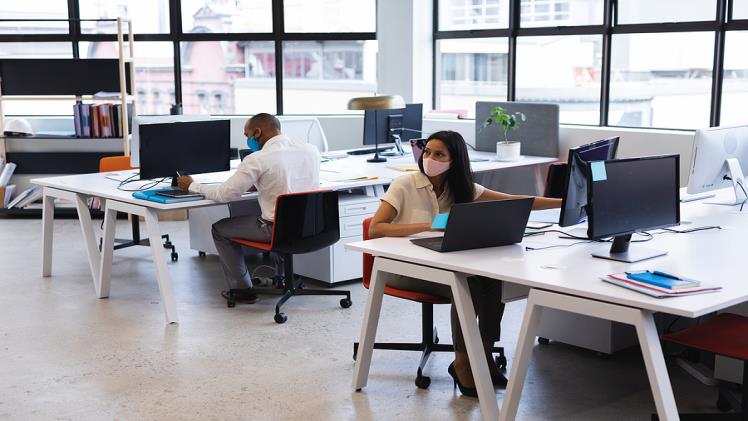The Covid-19 pandemic has changed the way we live, work, and spend our free time. After three years of intense work from home, many organizations decide to get back to office and are wondering how to rearrange their spaces to make them more employee-friendly. What are office space planning guidelines and how to make the transition to the hybrid workplace easier for your team?
How to prepare the post Covid-19 workplace?
What are the best office space planning guidelines?
- Define the purpose of each space – consider what each space will be used for and how employees will interact with one another. For example, will your team need to collaborate in small groups or will it primarily be working independently?
- Promote physical distancing – arrange furniture and workstations so that employees can maintain a physical distance of at least six feet from one another. If possible, create separate areas for individual work and group collaboration.
- Increase the frequency of cleaning and disinfecting common areas, surfaces, and equipment – consider providing personal protective equipment, such as gloves and masks, for employees to use.
- Provide support and resources – employees may feel anxious about returning to the office after working from home for an extended period of time. Provide support and resources, such as mental health services, to help employees transition back to the office.
How to make your office hybrid-friendly?
In order to make your office more hybrid-friendly, you should consider the following:
- Give employees the option to work from home on certain days or for certain projects. This will reduce the need for office space and help employees save on commuting costs.
- Invest in collaboration tools that can be used by employees whether they’re in the office or working remotely to keep everyone on the same page and facilitate communication.
- Make sure that the office is equipped with the amenities that employees need in order to be productive, such as a kitchen, break room, and comfortable seating to create a more pleasant working environment.
These are only some of the office space planning guidelines that can help you adjust the working environment to the expectations and needs of your employees.
What technology can be used?
There are a number of different office space planning guidelines and technologies that can be used to facilitate communication and collaboration between employees who are working in the office and those who are working remotely. Some of these tools include:
- Video conferencing used for team meetings, one-on-one check-ins, and other types of communication.
- Project management software that is ideal for keeping track of tasks, deadlines, and progress on projects.
- Instant messaging for quick and easy communication between employees.
- Real-time location asset tracking that helps to monitor the location of assets, equipment and employees in the office in real-time, which can be helpful for managing inventory and improving budget efficiency.
- Beacons that can be used to facilitate communication between employees and the office space. For example, beacons can be used to send notifications to employees’ smartphones when they enter or leave the office, or when they are near certain areas or resources.
These are only a few examples of the different types of office space planning guidelines and technology that can be used to support a hybrid workplace and create an environment employees will love.





